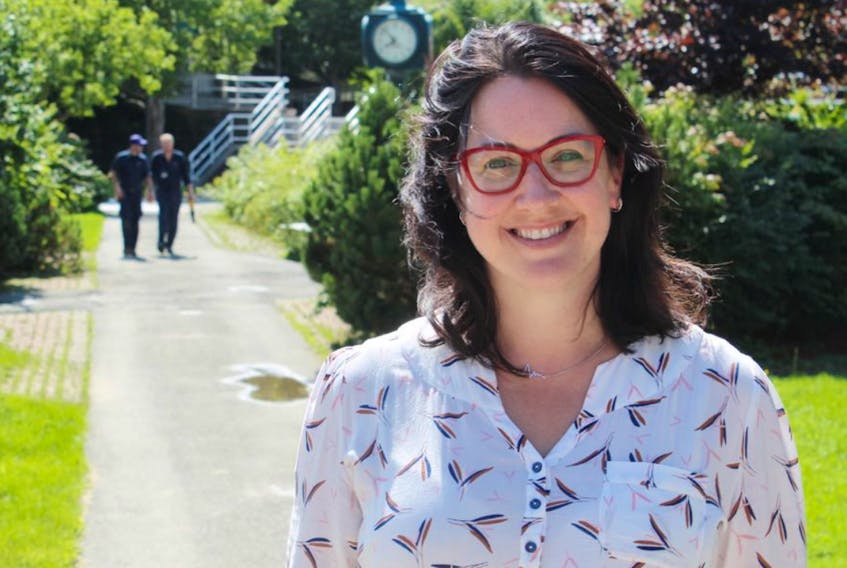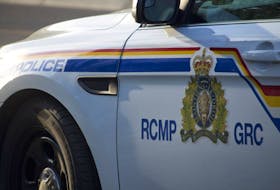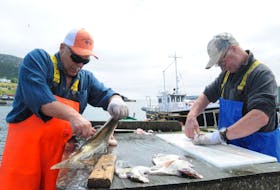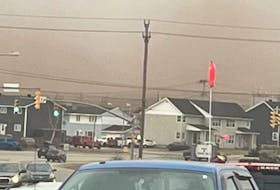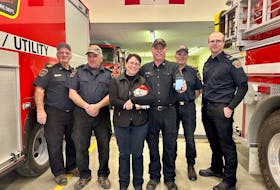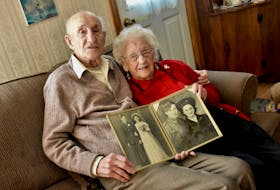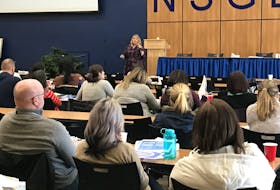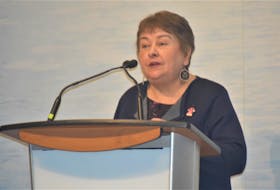ST. JOHN'S, N.L. — “I want for myself what I want for other women — absolute equality.”
Agnes Macphail, first female MP
If you live in the ridings of St. John’s East or Coast of Bays-Central-Notre Dame, you can’t vote for a woman on Oct. 21.
All of your candidates are men.
While the percentage of female candidates across Canada has increased from 33 per cent in 2015 to 42 per cent in this election, the number is lower in Newfoundland and Labrador — 25 per cent of candidates in this province are women.
“We’re not doing great,” said Amanda Bittner, Memorial University professor and director of the Gender and Politics Laboratory.
Bittner said she lives in the riding of St. John’s East, so she doesn’t have an option to vote for a woman — something she calls “problematic on many levels.”
Canada’s global ranking for elected women is 61st – sitting between Kazakhstan and the Dominican Republic in a list compiled by the Inter-Parliamentary Union this year. Countries that have more women in national parliaments include Mexico, Cuba, Rwanda, Norway, the Phillippines, Burundi, Sudan and Sweden.
Bittner said there’s one big reason why there are fewer women elected in Canada: parties haven’t put forward parity slates.
“There’s tons of research that shows that when women run as candidates, they win,” she said.
To increase the number of women, some countries have implemented quotas that require parties to slate a certain number of women.
“In Canada, we don’t have that requirement. Parties are not required to submit slates of candidates that have a particular number of women or not — it’s just up to them, basically. And so, the parties that take that issue more seriously, and try harder to recruit women, tend to have more women running as candidates.”
Still, Bittner said it’s been a slow improvement over time.
All major parties have increased the number of female candidates this year over 2015 numbers. The Liberals have increased female candidates to 39 per cent (up from 31 per cent), the Conservatives 32 per cent (up from 20 per cent), the NDP 49 per cent (up from 43 per cent), Green Party 46 per cent (up from 40 per cent), Bloc Quebecois 45 per cent (up from 28 per cent) and the People’s Party has 17 per cent female candidates, with no prior data because the party was formed last year.
“We have increases,” said Bittner.
“Are they astronomical? Absolutely not, but they’re a step in the right direction and they suggest that parties are taking this more seriously. We’ll only know after Monday, but this may mean a more diverse legislature, which is good for policy outcomes.”
However, another problem Bittner points out is that women and diverse candidates are often “sacrificial lambs” for parties in the sense that they tend to run in non-competitive ridings.
‘You need diversity at the table’
Equal Voice is a non-partisan organization aiming to increase the number of women elected in Canada. The organization is aiming to get 30 per cent representation in this election, which will mean electing 102 women. That would bring Canada’s global ranking up to 50th.
In 2015, a record number of women — 88 — were elected to the House of Commons. There are 338 ridings, so in the last election the percentage of female candidates elected was 26 per cent.
“You need diversity at the table, and you need a wider breadth of voices to properly represent the people of the country,” said Gina Hartmann of Equal Voice.
Hartmann said women have a tendency to work across party lines, make decisions and policy for gender equality, and tend to be better at bringing funding back to their home districts.
Bittner said it’s interesting that while Canadians generally say it’s a problem that there aren’t many women in Parliament, they also generally don’t like the idea of affirmative action, instead preferring merit.
She said people tend to favour affirmative action in terms of geographic quotas, but not when it comes to other kinds of demographics such as gender.
“I think if we flip the question and instead of saying, ‘Why aren’t there more women?’ we say, ‘Why the hell do we have so many men? Why are they overrepresented in our legislature? And why don’t we do something about that?’
“And that then changes the narrative a little bit, which can make it, I think, more palatable because suddenly, if you say, ‘Oh, let’s have 75 per cent women in our company,’ and somebody will say, ‘Well, that’s a lot.’ Well, then why do we have 75 per cent men in this company? That is still a lot, right?
“The numbers are the same, it’s just flipping the narrative. So, I think maybe that’s the way forward, is to think about who is overrepresented instead of thinking about who is underrepresented.”
Meet the women running in metro St. John's
Anne Marie Anonsen
Anonsen’s biography on the NDP website describes her as a tireless advocate with a proven track record of getting things done, including starting her own consultancy business, helping to build the rural craft industry in Newfoundland and assisting in starting Marguerite’s Place, a residence for women in crisis. Her leadership and dedication to building community also extends to being elected as town councillor for Pouch Cove, serving on the St. John’s Status of Women Council, the N.L. Craft Council and the executive of the provincial NDP. She’s also described as a mother who earned a bachelor of science degree while raising three children.
Alexandra Hayward
Hayward’s biography on the Green Party website describes her as a lifelong resident of Mount Pearl and a recent graduate of Memorial University, with a bachelor of science degree in biology with a geography minor. The website says she’s been recognized with awards for her community involvement and environmental efforts, and that she organized a campus club at university to encourage conversations about green issues. She serves as Newfoundland and Labrador representative on the Young Greens of Canada Council.
Lea Mary Movelle
Movelle’s biography on the NDP website describes her as a community researcher on issues ranging from drug courts to fisheries co-operatives. She’s also described as an activist and poet with a degree in political science from Memorial University, for which she received the departmental medal for excellence. She volunteers for the Social Justice Co-operative of N.L. and the Coalition for a Green New Deal.
Twitter: @juanitamercer_

